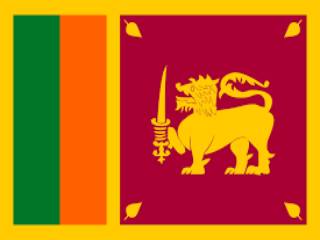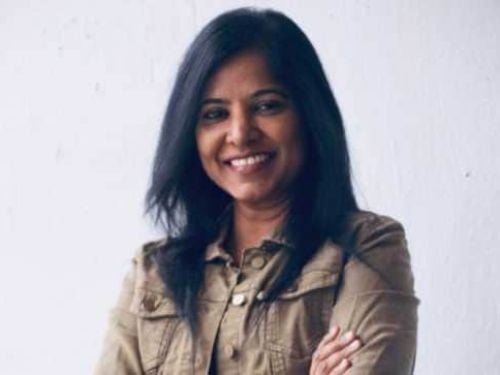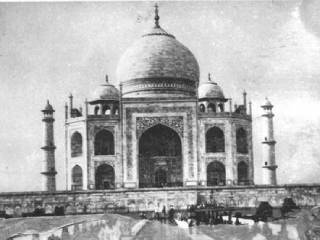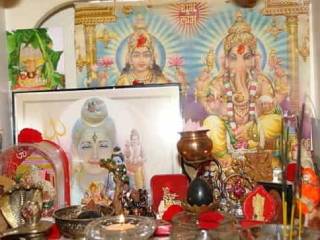What is erotic and what is art ? If s'ivalinga is seen as an erotic representation of a human male reproductory organ, it will look erotic to the so-called purveyor of freedom of expression who has a perverted notion of sex and sexuality. And, there are thousands of temples (devalaya) where s'ivalinga is worshipped by millions of Hindu. In the eyes of a person who understands the underlying cultural idiom of dharma, the s'ivalinga is a metaphor representing the summit of Mount Kailasa in the Himalayan glaciers which yield life-giving , purifiying and sacred waters of the Ganga emanating from the locks of S'iva in penance on the summit. It is all about metaphors and how one understands meanings of metaphors.
Hindu are outraged by MF Hussain's paintings not because they have some artistic value in them but because they ridicule metaphors held sacred in the Hindu traditions. If he is a true artist and is muslim next, will he represent Aisha or Fatima in erotic postures with Mohammad? This is the test of his true identity as an artist, assuming that one can have multiple identities.
MF Hussain does NOT understand the meanings of Hindu metaphors. He is only caricaturing the Hindu faith. If is he a liberated artist, why does he not show Aisha or Fatima in erotic postures with Mohammad? It is all in the eyes of the beholder to understand the meaning sought to be conveyed by a self-styled artist or even an art critic.
What is referred to as a temple (from templum, section of sky and ground used by Roman soothsayers) is a devalayam, an abode of divinities. In Hindu tradition, everyone and every phenomenon is an expression of divinity. Artistic form is secondary, though s'ilpakaras of Bharatam have produced s'ilpa of breathtaking beauty, proportion and form as exemplified by that pinnacle of artistic expression: Ellora kailasa mandiram. A devalayam thus becomes an extension of an individual's body into the cosmos, a yoga or union of the atman with the paramatman. There is no hint of eroticism in such expressions, such metaphors of the divine to represent an adhyatmika journey from being to becoming.
In Agama kos'a, SR Ramachandra Rao explains a devalayam as divine and yogic representation of a human being.
If people like Hussain or self styled 'south asia scholars' see eroticism in this metaphor, one should seriously question their claims to be artists or scholars. What is the meaning of art or scholarship if there is no attempt to understand the meanings of metaphors based on the cultural traditions and ethos?
In Hindu tradition, all expressions are manifestations of supreme divinity, paramatman. Will MF Hussain ever be able to understand the metaphor of the Cosmic dancer, Nataraja form of S'iva? Or, of Ravana lifting up and shaking the Mt. Kailasa, the abode of S'iva and Parvati shown in exquisite sculptures of the breath-taking artistic expression called Ellora Kailasa temple?
Eroticism or art is in the eyes of the beholder. S'akti in Hindu tradition is a feminine force of creation and many tantra traditions evolved. Sex was not viewed with any revulsion or perversion. It was simply viewed as a natural behavior. Vatsyayana's Kamasutra exemplifies this approach even it as it lists 64 arts while expounding on the meaning of education, 'vidyaasamuddes'a'. These arts also included study of arts such as: des'a-bhasha-jnana (spoken dialects), akshara mushtikakathana (gestures as metaphors of expression) and mlecchita vikalpa (cryptography or writing system). These are in addition to arts such as: singing, playing musical instruments, dancing, tattooing, adorning a murti with rice and flowers, c olouring the teeth, garments, hair, nails and bodies, i.e. painting, fixing stained glass into a floor and so on.
This is what Dr. K.L. Kamat had to say: "Many of the sculptures have the artists names carved under them and it is impossible for me to think that these creations were considered vulgar, if the sculptor felt compelled to claim artistic ownership. Although Khajuraho is most famous for these sculptures, most Indian temples have them in one form or another. Belur, Halebidu, Somanathupura, and Nugguhalli temples of the Hoysala period have many such beautiful sculptures. The Badami and Banashankari temples of the Chalukya times, and the Vijayanagar temples of Bhatkal, Lepakshi and Hampi have these too. The Meenakshi temple of Madurai and Veeraranarayan temple of Gadag has erotic sculptures on their Gopuram. Ancient Indians thought that the appropriate use of sex was an art. Perhaps that's why they called pleasure girls as artists. Many of these pleasure girls treated their profession as a form of devotion to God, and refined it as an advanced fine art. If you observe the Khajuraho temples from this perspective, you will notice the real beauty of the sculptures. And then you can't have enough of it! The parents who wish to teach their children the fine difference between sex and art should take their children to Khajuraho." http://www.kamat.com/kalranga/erotica/khaju.htm
It is a matter of deep regret that there are scholars who call themselves experts in south asian studies who have not even cared to understand what a devalayam means to every Hindu. If they do, they would not have written a letter of the type they wrote to The Guardian, showing themselves to be Gungadins.
Kalyanaraman, Ph.D., Sarasvati Research Centre, Chennai 600015
http://www.india-forum.com/articles/155/1/

 Mizoram: EC accepts Christians’ demand to defer counting on Sunday, but what if Hindus had made a similar demand?
Mizoram: EC accepts Christians’ demand to defer counting on Sunday, but what if Hindus had made a similar demand? Sign Petition : Immediately repeal the draconian and unconstitutional ‘The Waqf Act, 1995’
Sign Petition : Immediately repeal the draconian and unconstitutional ‘The Waqf Act, 1995’ Shriram : Sri Lanka’s saviour
Shriram : Sri Lanka’s saviour Why it is so cool to malign Hindu gods and goddesses, but it may not be that easy now
Why it is so cool to malign Hindu gods and goddesses, but it may not be that easy now Shocking Truth of Taj Mahal exposed by Late Pujya P. N. Oak
Shocking Truth of Taj Mahal exposed by Late Pujya P. N. Oak How are Hindus treated in states where they are in a minority?
How are Hindus treated in states where they are in a minority?